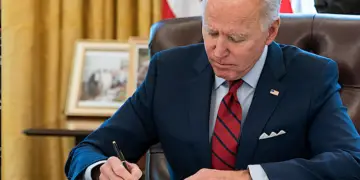As Gov. Dannel M. Malloy weighs whether to tinker with sales taxes in an attempt to garner additional revenue to close Connecticut”™s budget gap, legislators may consider a bill to allocate a portion of sales taxes to the state”™s municipal retail magnets ”“ but which could impose additional reporting burdens on chain retailers.
Despite evidence of an improved holiday shopping season, December sales and use tax collections were down 4 percent in Connecticut compared with a year ago, according to the Connecticut Department of Revenue Services ”“ still a welcome change from the 24 percent plunge reported the previous December.
Despite the smaller drop in December 2010, sales and use tax revenues remain up 2 percent for the first half of the state”™s 2011 fiscal year that began last July.
Freshman state Rep. Geoff Luxenberg proposed a bill that would require retail businesses to disaggregate their data to show sales and tax collections by town; and that Department of Revenue Services reallocate 0.25 percent of the current 6 percent sales tax to the town in which the tax was collected by the business.
Luxenberg hopes that would provide additional resources to towns that bear the burdens of being big box retailer destination points, from his home district of Manchester east of Hartford to Danbury, the largest retail draw in the state with an estimated $3.7 billion in retail sales in the fiscal year ending June 2009.
Under Luxenberg”™s proposal, Danbury would have received a check for $2.6 million covering sales tax collections in fiscal 2009.
Luxenberg”™s bill was referred to the legislative committee on planning and development, which under a law passed last year will have to consider the impact on any small businesses that would have to break down retail sales tax collections according to the town or city where they are collected.
Other significant retail legislation under consideration in the Connecticut General Assembly include bills to:
Ӣ remove a prohibition on retailers advertising they will absorb sales taxes otherwise paid by consumers;
Ӣ allow minors between the ages of 16 and 18 to work until 11 p.m. in retail establishments;
Ӣ force retailers to charge fees for plastic and paper bags used at checkout;
Ӣ allow stores to sell alcohol on Sundays, which Malloy favors; and
Ӣ find an effective way to collect sales taxes from retailers who sell goods in Connecticut over the Internet.
Under Connecticut law, consumers and businesses must pay an equivalent use tax if a retailer does not collect sales tax on a product at the point of purchase, including those bought online.
At 6 percent, Connecticut currently has the lowest sales tax of its neighboring states ”“ while the state of New York charges just 4 percent, local governments levy their own sales taxes that effectively push taxes there higher than in Connecticut.
Like its neighboring states, Connecticut also offers exemptions on many products and services ”“ a policy legislators are apparently weighing also.
In response to a query, in January the Connecticut Office of Legislative Research issued an overview of sales tax exemptions in the state. They report analyzed sales tax exemptions covering the difference between the sale price of a new motor vehicle or boat and the value of any trade-in; and one covering nonprofit organizations, which enjoy an exemption on any products they buy and from collecting sales tax on products they sell.
Exemptions covering food, drug, health care and heating fuel are estimated to total more than $1 billion in the current fiscal year.
















